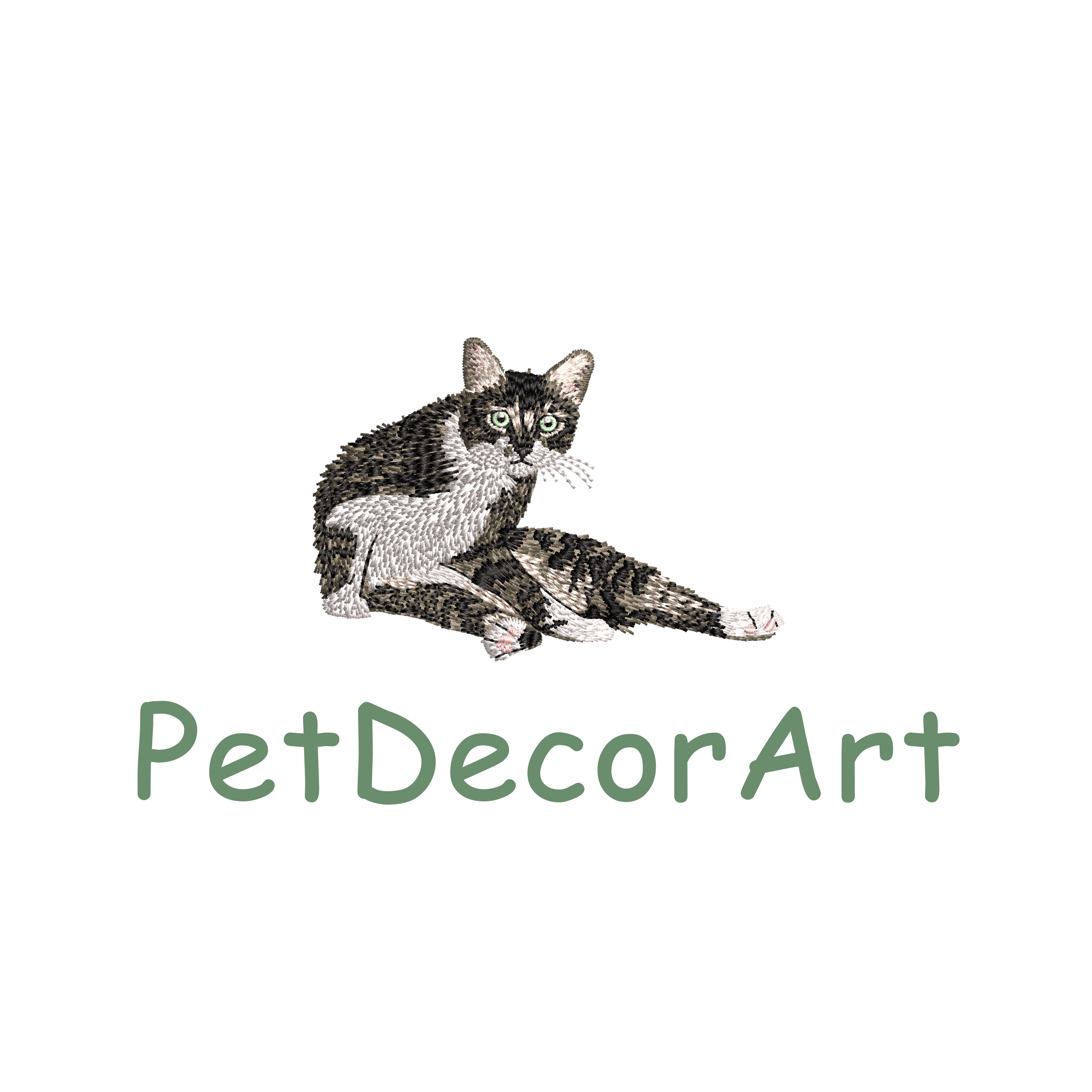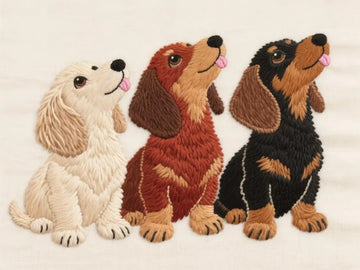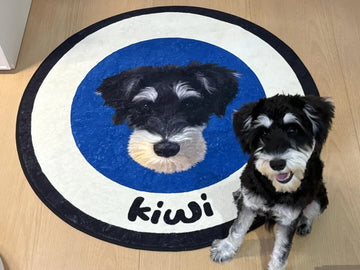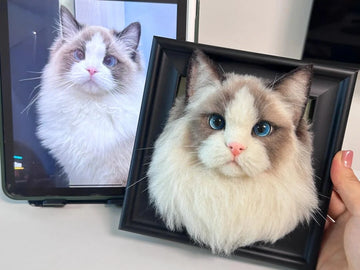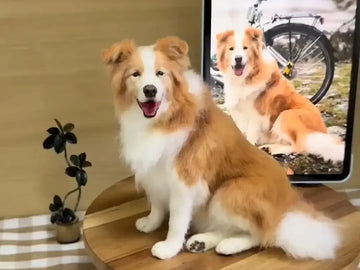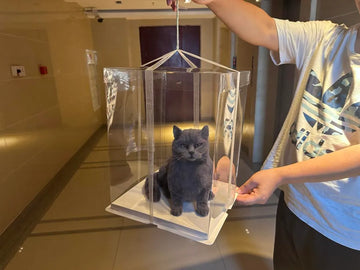Table of Contents
- Introduction: Why Embroidery Matters
- Jump Stitch
- Satin Stitch
- Split Stitch (PetDecorArt’s Choice)
- Herringbone & Fishbone Stitch
- Tatami Stitch
- Embroidery and Emotional Storytelling
- FAQ: Custom Embroidery
- Conclusion
Introduction: Why Embroidery Matters
Embroidery has been a cherished craft for centuries, blending artistry with durability. Unlike printed graphics or machine-made patterns, embroidery carries a tactile quality—each stitch tells a story. When applied to custom pet portrait clothing, embroidery transforms everyday apparel into a keepsake infused with memory, warmth, and personality.
In modern embroidery, flat stitching techniques (often called “平绣” in Chinese embroidery traditions) are widely used. These include jump stitch, satin stitch, split stitch, herringbone/fishbone stitch, and tatami stitch. Each method offers unique visual effects and tactile qualities. Understanding these differences helps us appreciate the craft behind PetDecorArt’s embroidered pet portrait apparel, and why certain techniques are chosen for delicate work like pet portraits.
Jump Stitch
Jump stitch is one of the most commonly used embroidery techniques in flat stitching. It creates designs by having the thread “jump” between points rather than covering the entire surface continuously. The result is light, airy, and dynamic, making it great for outlines or sketch-like patterns.
Advantages: Jump stitch consumes less thread, making it efficient for larger projects. It offers a sketchy and expressive look, ideal for playful pet motifs or line-art styles.
Drawbacks: Because it leaves gaps between stitches, jump stitch is less suitable for detailed, photo-realistic portraits. Fine facial features like a cat’s whiskers or a dog’s eyes may appear incomplete or fragmented.
Overall, jump stitch is excellent for abstract or simplified designs but lacks the depth required for lifelike pet portraits.

Satin Stitch
Satin stitch, also known as “挨针绣,” produces a smooth, glossy finish by placing stitches closely together side by side. This technique is often used to create lettering, borders, and decorative highlights.
Advantages: Satin stitch has a beautiful sheen, giving embroidery a polished and luxurious look. It’s perfect for adding names or accent details to personalized apparel, such as a pet’s name stitched under their portrait.
Drawbacks: The surface threads are more exposed, which means they can snag or wear out faster with frequent washing. For large filled areas, satin stitch can also appear uneven or bulky.
While satin stitch is stunning for small highlights, it is not the most practical for recreating the intricate textures of fur or complex shading in custom pet portrait embroidery.

Split Stitch (PetDecorArt’s Choice)
Split stitch, or “插针绣,” is created by bringing the needle through the thread itself, splitting it as the embroidery progresses. This creates a textured, rope-like effect that can be built up in layers to achieve remarkable detail.
Advantages: Split stitch allows for subtle shading, smooth curves, and realistic textures—making it one of the best techniques for portraiture. Each stitch blends seamlessly into the next, enabling artists to replicate the softness of fur, the sparkle in a dog’s eye, or the delicate shading of a cat’s ears.
Drawbacks: It is time-consuming and requires significant skill. Each piece demands patience, as every stitch must be carefully placed to avoid unevenness.
At PetDecorArt, split stitch is the chosen technique for hand-embroidered pet portrait apparel. From T-shirts to pajamas, this method ensures that every thread contributes to a lifelike portrayal of beloved pets. Unlike digital prints, embroidery using split stitch creates tactile depth—something you can see and feel.

Herringbone & Fishbone Stitch
Herringbone stitch and fishbone stitch (often referred to collectively as “三角针” or “人字针”) are excellent for filling larger spaces while maintaining a decorative pattern. The interwoven style of these stitches adds a layered, textured look.
Advantages: These stitches are highly versatile, providing both structure and design. They are commonly used for leaves, feathers, or large fur areas in animal portraits, creating depth and shading with overlapping threads.
Drawbacks: Because of their complexity, these stitches require more planning and precision. If not executed carefully, the result can look uneven. They are also less effective for small, fine details such as eyes or whiskers.
While not as common in portrait embroidery, herringbone and fishbone stitches are excellent for background elements or stylized interpretations of pets.

Tatami Stitch
Tatami stitch, or “榻榻米绣,” is another common filling technique. It uses a series of parallel stitches that lie flat and even, resembling the woven pattern of tatami mats in Japanese culture.
Advantages: Tatami stitch is durable and efficient, making it ideal for covering large areas with uniform texture. It’s frequently used in machine embroidery for logos, patches, and decorative panels.
Drawbacks: While neat, tatami stitch lacks the nuanced shading and subtle textures required for realistic portrait work. It can appear flat and mechanical compared to the organic feel of split stitch.
For pet portraits, tatami stitch is more suitable for backgrounds or stylized patterns rather than the portrait itself.

Embroidery and Emotional Storytelling
Embroidery is more than a craft—it’s a language of love and memory. Each stitch represents time, patience, and care, making embroidered apparel a powerful way to carry emotional connections. When it comes to pets, embroidery transforms a photograph into wearable art, preserving the warmth of a beloved companion.
Imagine gifting a custom embroidered pajama set. It’s not just fabric—it’s a way for someone to fall asleep with their pet “by their side” every night. This intimacy cannot be replicated by mass-produced products.
Embroidery also holds up over time. While prints may fade, hand-stitched portraits retain their depth and texture, becoming heirlooms that can be passed down as keepsakes. This permanence is why embroidery is often chosen for memorial gifts—helping pet owners honor companions who are no longer physically present, but forever remembered.
FAQ: Custom Embroidery
Why is split stitch best for pet portraits?
Split stitch allows artists to capture fine details like fur, eyes, and shading, giving a more lifelike result compared to other stitches.
How durable is hand embroidery on clothing?
Hand embroidery, when cared for properly, is highly durable. Gentle washing and air drying help preserve the threads for years.
Is embroidery more valuable than printed designs?
Yes. While prints may be cheaper, embroidery offers texture, longevity, and emotional resonance that printed graphics cannot replicate.
Conclusion
Every embroidery stitch has its place, but when it comes to capturing the essence of pets in wearable art, split stitch reigns supreme. It blends precision with warmth, making each piece not just an item of clothing, but a memory woven into fabric.
That’s why PetDecorArt’s embroidered pet portrait apparel relies on this technique—to ensure that every custom piece reflects the love, detail, and uniqueness of the bond between pets and their people.
Because true craftsmanship is measured not in speed, but in the depth of emotion each stitch carries.
